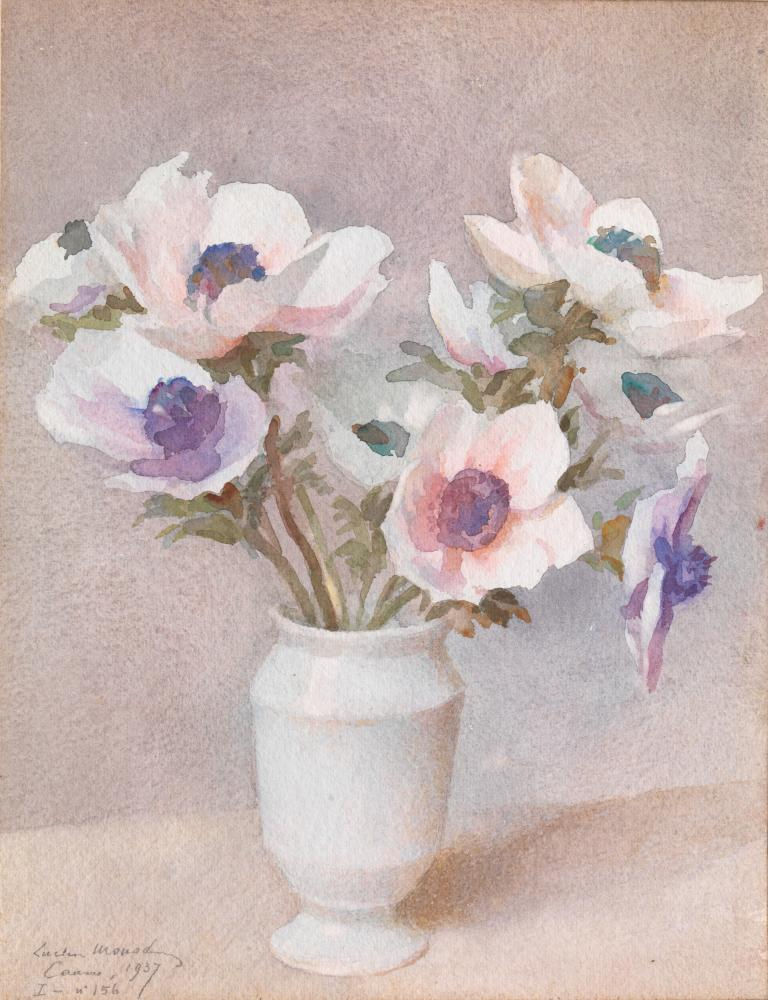The Flower Paintings of Lucien Hector Monod (1867-1957)
- Messum's Studio

- Apr 15, 2020
- 3 min read
The critic John Ruskin once noted of a still life of a mug by William Henry Hunt (1790-1864) 'The whole art of painting is in that mug...If you can feel how beautiful it is, how ethereal, how heathery and heavenly, as well as to the uttermost muggy...'.
This surprisingly modern appraisal by Ruskin highlighting the key to a successful still life painting, applies perfectly to the glorious flower watercolours by Lucien Hector Monod (1867-1957) whose work is celebrated in the current exhibition at David Messum's London gallery (exhibition dates 1 - 24th April 2020). The exhibition explores the Estate of the artist and incorporates both the early Symbolist paintings through to the sun-drenched views of the South of France. A key element in the exhibition is the previously unseen watercolour studies of the blooms which Lucien gathered from his gardens in the South of France.
Painted during the 1930s and 1940s, these delicate impressions of roses, peonies and almond blossoms display the artist as a supreme draughtsman, a quality which had been commented on throughout his artistic life. By the early twentieth century Lucien Monod's drawings and watercolours had started attracting as much attention as his paintings. In 1903, the French art historian Gustave Soulier published an essay on this aspect of Monod’s oeuvre in the journal 'L’Art Décoratif: Revue de l’art ancien et de la vie artistique moderne' and commented:
‘The charming drawings, from the practiced pencil of Lucien Monod deserve to hold our attention by his means of expression, by his soft and tasteful touch and surety of contour, his drawings recall the eighteenth-century masters. He recovers their tradition, but a new grace blossoms; he is a modern Fragonard. Svelteness, a freedom in the movement make these works in which we witness the character of our times. We discover a contemporary beauty, analogous to that seen in the gracious masters of the eighteenth century … it is this that Lucien Monod gives us.'
Various members of the Monod family had settled in Provence, and the wonderful light there captivated Lucien. Towards the end of the Great War he found a former boarding school, the Clos St Jacques, located on what was then a largely empty hillside high above Cannes. Extended and renovated, it would be his and Charlotte’s home for the rest of their long lives. As one visitor would record, the house had ‘incredible views towards everything around Cannes worth looking at,’ including the Esterel hills and the Mediterranean below, dotted with islands. Behind was Lucien’s rose garden, surrounded by ancient hedges and a large boundary wall.
Monod’s principal business remained portraiture. He moved to Cannes knowing no-one, but with the intention of making a living painting the wives and daughters of the wealthy British, American and Russian visitors who had been congregating in ever increasing numbers on the French Riviera since the late nineteenth century. The Calais-Mediterranean Express train – what became the famous Train Bleu – had opened in 1886, linking well-off travellers from the north with what would eventually be dubbed the Côte d’Azur.
Cannes would become synonymous with health, wealth, sunshine and glamour. And it was here, between portrait commissions, that Monod made many of the paintings that are on display in this exhibition: en plein air oils and watercolours of boats in the harbour at Cannes and St Tropez, the lush landscape of Provence, or roses picked fresh from his garden.
A major exhibition of Monod’s work was held in the Musée Grimaldi at Antibes some years after his death. An artist who lived sometimes at a villa nearby came in to visit, and liked what he saw. ‘That man knew what he was doing,’ he remarked, looking at the pictures.
The visitor was Picasso.
Messum's exhibition includes a number of carefully selected examples of Lucien Monod's flower paintings, all of which have are presented in hand-made frames, based on the original frames which came from the Studio Estate.
To view the full exhibition, see Messum's website www.messums.com
To purchase the fully illustrated 64 page catalogue, CLICK HERE
To view the recently produced short film exploring the Lucien Hector Monod at the gallery in St. James's and featuring interviews with David Messum, CLICK HERE














Comments